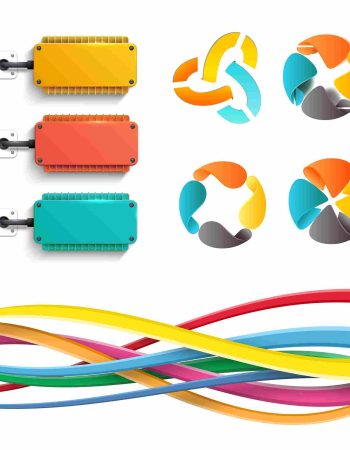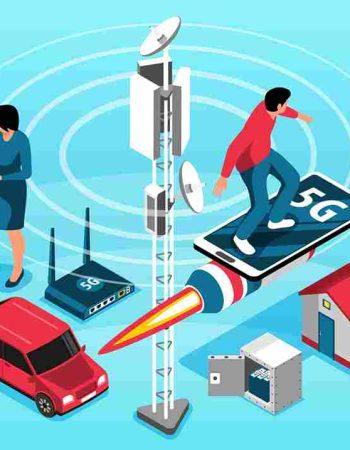In this rapidly evolving digital era, where connectivity is the cornerstone of modern living and business operations, the importance of future-proofing your space cannot be overstated. Whether it’s your home, office, or commercial establishment, ensuring that your network infrastructure is robust and scalable is essential for staying ahead in the digital age. Network cabling stands out as a foundational element in achieving this goal, offering a myriad of advantages that can revolutionize your space and propel you into the future. In this comprehensive guide, we’ll delve deeper into six compelling advantages of network cabling and explore why it’s a strategic investment for any modern environment.
1. Reliability
At the core of network cabling’s appeal is its unparalleled reliability. Unlike wireless connections that are susceptible to interference from neighboring networks, physical obstacles, or environmental factors, network cables provide a stable and secure pathway for data transmission. Whether you’re transferring critical business data, streaming high-definition media, or conducting real-time video conferencing, network cabling ensures consistent connectivity without the risk of signal dropouts or interruptions.
This reliability is particularly crucial in environments where downtime is not an option, such as data centers, hospitals, or industrial facilities, where even a momentary loss of connectivity can have severe consequences. Moreover, network cabling minimizes the risk of signal interference, ensuring that your data remains secure and intact during transmission. With cables securely installed and shielded from external factors, you can trust that your network will deliver optimal performance under any circumstances, providing peace of mind and operational stability.
2. Speed and Performance
In today’s fast-paced digital landscape, speed is of the essence. Whether you’re downloading large files, streaming high-definition content, or accessing cloud-based applications, having a network infrastructure that can keep up with your demands is essential for maintaining productivity and efficiency. Network cabling, particularly fiber optic cables, offers unmatched data transmission speeds, far surpassing even the most advanced wireless technologies. With fiber optic cables capable of transmitting data at the speed of light, you can enjoy lightning-fast connectivity that enables seamless multitasking and real-time collaboration.
Whether you’re working with bandwidth-intensive applications like video editing, CAD design, or scientific research, network cabling ensures that you have the bandwidth and throughput needed to handle the most demanding tasks with ease. Moreover, network cabling provides low latency, reducing the time it takes for data to travel from one point to another.
This low latency is critical for applications that require real-time responsiveness, such as online gaming, virtual reality, or telemedicine, where even milliseconds can make a difference in user experience and performance.
3. Network Cabling Scalability
As your space evolves and your connectivity needs grow, having a network infrastructure that can scale with your requirements is essential for future-proofing your environment. Network cabling offers unmatched scalability, providing the flexibility to expand your network seamlessly as your business or residential needs change. With proper infrastructure in place, adding new devices, users, or applications to your network becomes a straightforward process.
Whether you’re expanding your office space, deploying new IoT devices, or integrating emerging technologies like augmented reality or 5G connectivity, network cabling provides the bandwidth and capacity to accommodate your evolving needs without compromising performance. Moreover, network cabling allows for efficient resource allocation, enabling you to segment your network into dedicated channels for specific applications or user groups.
This segmentation enhances security, optimizes bandwidth usage, and simplifies network management, ensuring that your infrastructure remains agile and adaptable to changing demands.
Also Read: 8 Tips for Maximising the Lifespan of Your Network Cabling Infrastructure
4. Network Cabling Security
In an era where data security and privacy are paramount concerns, network cabling offers a higher level of protection against cyber threats compared to wireless connections. Unlike wireless networks that are vulnerable to unauthorized access, interception, or eavesdropping, physical cables provide a secure and tamper-proof medium for data transmission. By keeping your data confined within physical cables, network cabling reduces the risk of data breaches, man-in-the-middle attacks, or other forms of cyber intrusion.
Moreover, network cables can be encrypted to further enhance security, ensuring that your sensitive information remains protected from unauthorized access or interception. Additionally, network cabling allows for greater control over access permissions and network policies, enabling you to enforce strict security measures such as access control lists, firewall rules, or intrusion detection systems. This granular control enhances visibility and compliance, empowering you to safeguard your network assets and mitigate security risks effectively.
5. Durability and Longevity
Investing in network cabling is not just about meeting your immediate connectivity needs; it’s about future-proofing your space for the long term. Unlike wireless equipment that may require frequent upgrades or replacements, high-quality network cables are built to last, withstanding environmental factors, physical wear, and harsh operating conditions. Whether you’re installing cables in an office building, industrial facility, or outdoor environment, network cabling offers unmatched durability and resilience.
With proper installation and maintenance, network cables can endure for years, providing reliable connectivity and performance without degradation or downtime. Moreover, network cabling is designed to withstand electromagnetic interference (EMI), radio frequency interference (RFI), and other external factors that can degrade signal quality or compromise performance.
This robust construction ensures that your network remains stable and secure even in challenging environments, minimizing the need for costly repairs or replacements over time.
6. Consistency and Predictability
One of the key advantages of network cabling is its consistency and predictability. Unlike wireless connections that can be affected by fluctuations in signal strength, network cabling provides a stable and reliable connection that you can count on day in and day out.Whether you’re conducting business-critical operations, streaming multimedia content, or gaming online, network cabling ensures a seamless and uninterrupted experience.
This consistency is essential for maintaining productivity, reducing latency, and enhancing user satisfaction, particularly in environments where reliability is paramount. Moreover, network cabling offers predictable performance metrics, allowing you to accurately forecast bandwidth requirements, plan for future growth, and optimize network resources.
This predictability enables you to make informed decisions about network infrastructure investments, ensuring that your space remains agile and responsive to changing demands.
Final Thoughts
In conclusion, network cabling is not just a means of connecting devices; it’s a strategic investment in future-proofing your space for the digital age. By harnessing the advantages of reliability, speed, scalability, security, durability, and consistency, network cabling transforms your environment into a robust and resilient ecosystem ready to embrace the challenges and opportunities of tomorrow.
Whether you’re upgrading your home network, renovating your office infrastructure, or expanding your commercial operations, investing in network cabling is a decision that pays dividends for years to come, ensuring that your space remains at the forefront of technological innovation and connectivity.






